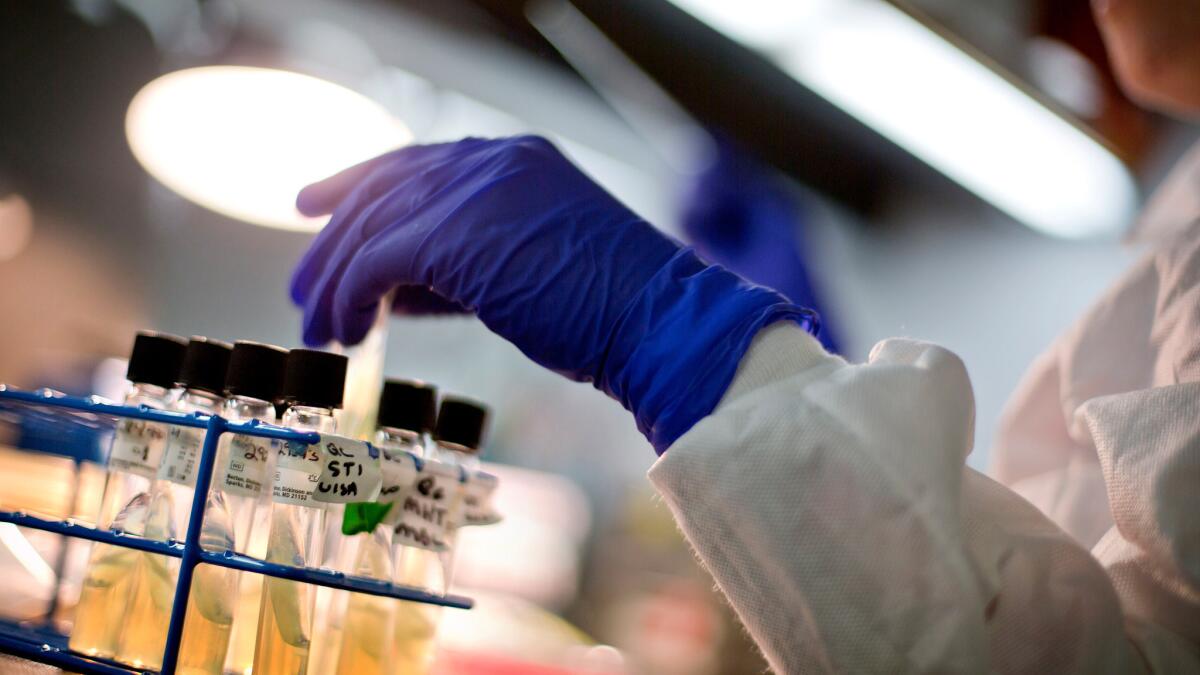United Nations takes on antimicrobial resistance

- Share via
Meeting under the umbrella of the United Nations General Assembly, international leaders on Wednesday launched new efforts to stem the rising tide of antimicrobial resistance, which has blunted the effectiveness of existing medications in treating infectious diseases.
Heads of state and country delegates gathered at a U.N. meeting on the subject vowed to increase international coordination and funding aimed at monitoring the emergence of antimicrobial resistance and reducing the misuse of antimicrobial agents in human and veterinary health and agriculture.
Working from a blueprint drafted in 2015 by the World Health Organization, U.N. agencies overseeing global medicine, agriculture, animal health and economic development are to sketch out a raft of actions for the General Assembly to take up in September 2018.
In the United States, antimicrobial-resistant bacteria cause more than 2 million infections and 23,000 deaths each year, resulting in an estimated $20 billion in excess medical spending.
Driven by overuse in farm animals and human patients, as well as by organisms’ natural tendency to evolve resistance to competitive microbes, disease-causing bacteria such as Clostridium difficile, Neisseria gonorrhoeae and Staphylococcus aureus are quickly developing resistance to powerful wide-spectrum antibiotics.
In hospitals, locker rooms and public spaces, disease-causing bacteria that can no longer be vanquished by existing medications are thriving.
The U.N.’s blueprints for action “can only be useful if they are reflected and implemented at the national level, and if they are the basis on which we create the necessary sustainable change in the way we use antibiotics,” said Dr. Monique Eloit, director general of the World Organization for Animal Health.
Eloit told leaders that nations must adopt domestic policies and also work together to reduce the overuse of existing antibiotics and speed the discovery of new ones to replace those waning in effectiveness.
“We all know that research on new molecules needs to be boosted through private and public collaboration,” Eloit said.
The U.N. initiatives come on the heels of evidence, collected by U.S. monitoring agencies, that E. coli bacteria has begun to circulate inside the United States that is resistant to colistin, a wide-spectrum antibiotic that’s a last line of defense for many patients.
Samples of E. coli with a colistin-resistant gene were first found in China, one of the world’s biggest users of colistin in agriculture. In a process that is sapping the power of medicines around the world, scientists surmise that the broad use of colistin in livestock accelerated the evolution in E. coli of resistance genes.
Despite campaigns aimed at discouraging the indiscriminate use of antibiotics, a study released this week suggests that physicians have not scaled back on prescribing the medications.
Research published in the journal JAMA Internal Medicine on Monday found that overall rates of antibiotic use in U.S. hospitals were unchanged from 2006 to 2012. During the same period, the use in hospitals of some antibiotics, especially those capable of combating a wide range of pathogens, increased.
In more than half of in-patient hospital stays, the study found, a physician prescribed antibiotics. And a growing proportion of those prescriptions were for the kinds of drugs that should be used as infrequently as possible to preserve their effectiveness: third- and fourth-generation cephalosporins, macrolides, glycopeptides, β-lactam/β-lactamase inhibitor combinations, carbapenems and tetracyclines.
Follow me on Twitter @LATMelissaHealy and “like” Los Angeles Times Science & Health on Facebook.
MORE IN SCIENCE
Men with anxiety are more vulnerable to cancer, study says
Chill out, ladies. Stress can erase the benefits of your healthful diet
FDA asks coders to create an app that matches opioid overdose victims with lifesaving rescue drug




